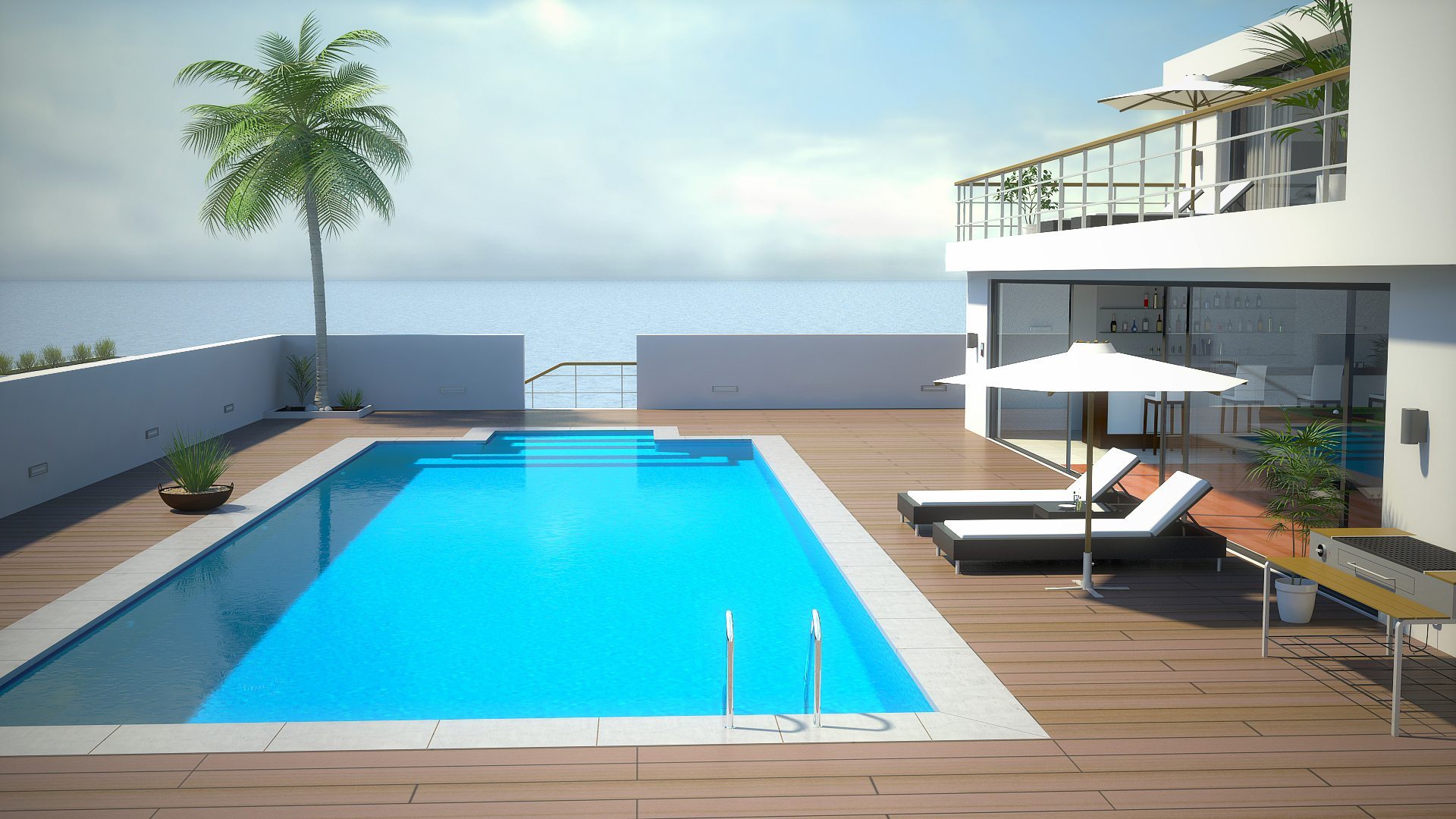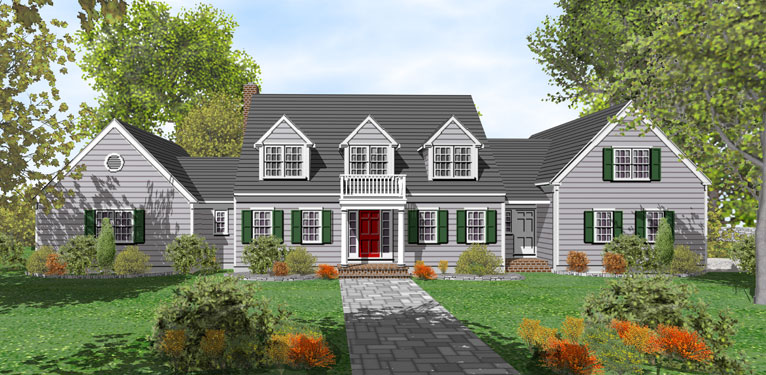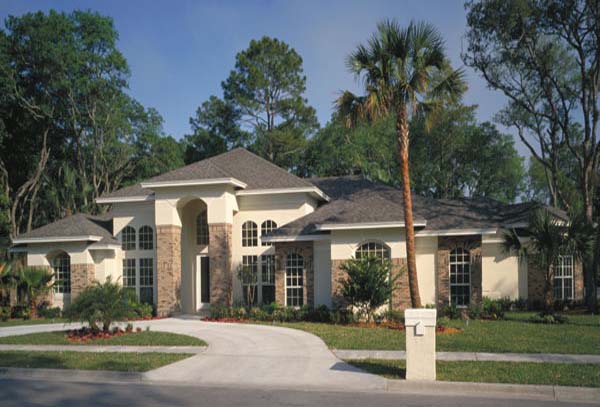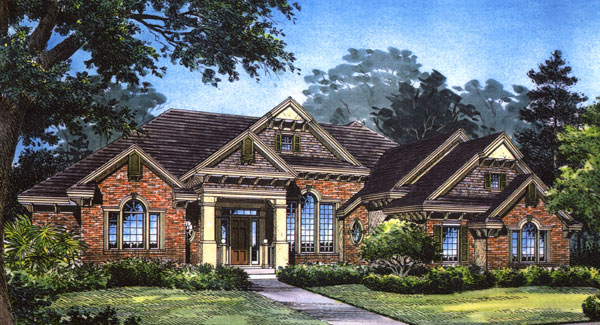Home > Cottage house plan
Cottage House Plan
Our Cottage house plans collection is not only confined to small, charming, cabins, bungalows, and cottage style blueprints, but also includes larger informal home plan designs as well. Log homes, both full and half log, bring a rustic country charm. Home plans that feature open concept kitchens are great for entertaining and family gatherings. Wraparound porches add spacious outdoor living with a distinctive flair. Basements can be found in many of the plans, making it a perfect space for bedrooms, a rec room, a man cave, or whatever your heart desires. Country-style and our Farmhouse plans are highly sought after for a timeless look with modern amenities.
No matter your preferences, house plans featuring Cottage style architecture make the perfect start to the home of your dreams. We invite you to explore these Cottage house plans and search for your perfect floorplan.Cottage plans are more often ranches or one-and-a-half story home plans and floor plans and can serve as second homes, a year-round dwelling, an art or writing studio or a quaint living space for aging parents or out-of-town guests. Cottage plans often look as if they were plucked right out of an old-fashioned postcard, and give homeowners the ability to build a home in a quaint style with plenty of charm and character. Some cottage plans even incorporate wrap-around porches that help to create the ideal setting for lakefront and beachside vacation homes.
Cottage plans generally incorporate open floor plans and abundant windows to bring the outdoors in. Cozy bedrooms and private baths are usually grouped together for convenience, with common living areas located at the center of the home for easy entertaining. Additional features like built-ins, comfortable porches, distinctive exteriors and inviting front entries emphasize the quaint and charming nature of cottage house plans. Because cottage plans are about creating a living space that evokes relaxation and nostalgia, most plan designs focus on simplicity, comfort and efficiency. This often results in cottage plans with efficient layouts and creative use of small spaces to maximize square footage and maximize livability.
From ornate gabled roof details and lovely porches on the exterior, to cozy living spaces with inviting hearths and well-designed kitchens, cottage house plans offer all of the amenities many of our larger house plans offer. Cottage house plans are designed to provide comfortable and intimate interior spaces with plenty of luxuries that homeowners can enjoy.
Sometimes, they feature an outdoor living space to enjoy during warm months, such as a breezy screened porch, or a grilling patio that invites outdoor entertaining.
Features of Cottage House Plans
• Cozy floor plans with inviting entryways
• Rustic and welcoming interior details
• Open-concept layouts for gathering spaces
• Wraparound porches to enjoy the great outdoors
• Gabled roofs for traditional aesthetics
If you love cottage house plans also take a look through our country house plans and bungalow house plans as these house designs often overlap in style, the only difference is that bungalow house plans typically are one story and cottage house plans usually have one or two. Explore these delightful cottage house plans. More about cottage house plans.
Creole Cottage: A Rich Architectural Heritage
Introduction
The Creole Cottage is a unique architectural style that originated in the Southern United States, particularly in Louisiana. This distinctive form of residential architecture reflects the cultural heritage and historical influences of the region.
I. Historical Background
The Creole Cottage style emerged during the late 18th and early 19th centuries in Louisiana, primarily in New Orleans and the surrounding areas. The style has its roots in the blending of diverse cultural influences, including French, Spanish, African, and Caribbean. The term "Creole" refers to the mixed-race population and their unique cultural identity in the region.
II. Architectural Features
a. Raised Foundations: Creole Cottages are typically elevated on piers or short columns, known as "pilotis." This design feature allows for improved ventilation, protection from floods, and is reminiscent of the influence of French and Spanish colonial architecture.
b. Symmetry and Simplicity:Creole Cottages often exhibit a symmetrical façade with a central doorway and an equal number of windows on each side. The simplicity of the design is a departure from the more ornate architectural styles popular in Europe at the time.
c. Gabled Roof:The roof of a Creole Cottage is usually steeply pitched, with a gable at the front and back. The gable ends may feature decorative elements, such as louvered vents or wooden brackets, adding to the visual appeal of the structure.
d. Gallery or Porch: A distinctive feature of Creole Cottages is the covered gallery or porch that extends along the front of the house. This space serves as an outdoor living area and provides shade from the intense Southern sun. The galleries often feature ornate wrought-iron railings and columns, adding to the architectural charm.
e. Brick or Stucco Construction: Creole Cottages are typically constructed using locally available materials, such as brick or stucco. The use of these materials reflects the adaptation to the local climate and the influence of French and Spanish building traditions.
III. Cultural Significance
a. Historical Context: Creole Cottages are a tangible reminder of the complex social and cultural history of the Southern United States. They serve as a link to the region's colonial past, reflecting the intermingling of diverse cultural influences and the unique heritage of the Creole population.
b. Community and Identity: Creole Cottages contribute to a sense of community and regional identity. They are often found in close proximity, creating a cohesive architectural fabric and a distinctive neighborhood ambiance.
c. Resilience and Adaptability: Creole Cottages were designed to withstand the challenges of the Southern climate, including high temperatures, humidity, and the threat of floods. The raised foundations, steep roofs, and galleries are practical features that demonstrate the adaptability of the style to the local environment.
d. Preservation and Conservation: The preservation of Creole Cottages is crucial for maintaining the cultural heritage of the region. Efforts to conserve and restore these structures contribute to the sense of place and historical continuity.
IV. Contemporary Relevance
Despite the passage of time, Creole Cottages continue to inspire architects and homeowners today. The enduring appeal of the style lies in its simplicity, charm, and connection to the cultural heritage of the Southern United States. Many restoration and revitalization projects aim to preserve and adapt these historic structures for modern living, ensuring their continued relevance in the 21st century.
Conclusion
The Creole Cottage is an architectural gem that reflects the cultural diversity, historical context, and environmental considerations of the Southern United States, particularly Louisiana. Its unique features, including raised foundations, gabled roofs, covered galleries, and simplicity in design, distinguish it as a significant architectural style. The preservation and appreciation of Creole Cottages contribute to a sense of place, cultural identity, and historical continuity. As these structures continue to endure and inspire, they serve as a testament to the rich architectural heritage of the region and the enduring legacy of the Creole culture.









